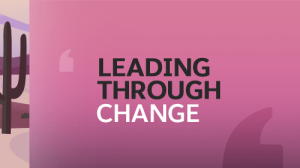A Better Approach To Documenting Your Customer Service Process



If call centres were the only places where you needed to document customer service issues, Canadian small and medium-sized business would have it pretty easy. After all, as the recordings often say, calls can always be recorded for quality assurance purposes.

Salesforce Canada
If call centres were the only places where you needed to document customer service issues, Canadian small and medium-sized business would have it pretty easy. After all, as the recordings often say, calls can always be recorded for quality assurance purposes.
Yet the best documentation needs to go beyond merely recording the entire session. It means thinking carefully about the interaction and even making notes that offer a degree of analysis. That’s the whole point, really: to capture best practices in customer service as they become evident through real-time problem-solving.
What makes it harder now, of course, is that the ubiquitous nature of technology has given customers so many more touchpoints than ever before. This includes calls from their mobile devices like smartphones, social media services, apps and perhaps soon even undreamed-of interactions via the Internet of Things.
This makes documentation even more important because, if it’s done the right way, some of the key principles should be applicable across many of the same touchpoints. Consider the following:
Map The Most Common Service Journeys
In B2B firms, we often talk about the “buyer journey,” or the sequence of steps that take them from awareness of a product or service to considering a purchase and finally making a transaction. In many SMBs there may be something similar going on when customers reach out for help. This could be the kind of channel they use, the average response time across that channel, the team members that may need to be consulted or to whom a customer must be routed, and finally the overall time to resolution and typical next steps.
In most cases there will not be one single customer service journey, but there probably won’t be an infinite series of variations, either. Take time to talk to agents as a team about what seem to be the routines and ensure you not only are well resourced to support those journeys, but make sure there aren’t ways to make them faster, simpler or better journeys.
Segment The Service Issues Related To Your Most Valuable Customers
Each customer should be entitled to the best service possible, but businesses sometimes live or die based on how well they support their most loyal customers. That’s one the best reasons to use tools like CRM, because they make it easy to quantify those who have placed repeat orders to continue to become valuable in some way. Their expectations may rise in parallel with the volume of business they conduct over time, so consider creating a customer service strategy or allocating resources specific to reducing any churn in this isolated group.
Turn Service Solutions Into Market Research Opportunities
Making customers’ lives easier may require learning more about them, beyond the products and services they have bought in the past. What data can you gather through these interactions about their needs, wants and experiences with your current offerings? How might this influence the way you try to nurture your relationship once their problem has been resolved? Think of the questions that will help get at this data, ensure agents note it accordingly and then get it in your CRM.
Identify (And Nurture) Your Top ‘Documentors’
Just like in sales and marketing departments, there are often customer service stars that rise to a level well above the best of their team members. These are the people who are given the toughest problems to resolve, because you know they can do it with speed and professionalism. Chances are they are also among the best at capturing key learnings from each interaction. Singling out these individuals not only for their performance but their prowess in documentation is a great way to move beyond traditional top-down approaches to training.
Document The Channels That Should be Prioritized For Service
Social media could be a place where some complaints or questions first emerge, but that’s not necessarily the place where they’ve optimally resolved. Make sure the team is documenting how they move such cases to a phone call, an email exchange or some other channel. Look at which channels offer the best return, both in terms of fast resolution but overall customer satisfaction. This will help you determine which channels to emphasize to customers in your after-sale marketing activities.
You don’t have to turn documentation into something the size of a book, but if everyone takes enough notes, it will be clear how to evolve customer service from a necessary chore to a mechanism for growing your business.
Learn more about Salesforce’s customer service solutions or what makes the best service organizations successful in Salesforce’s free eBook:


















